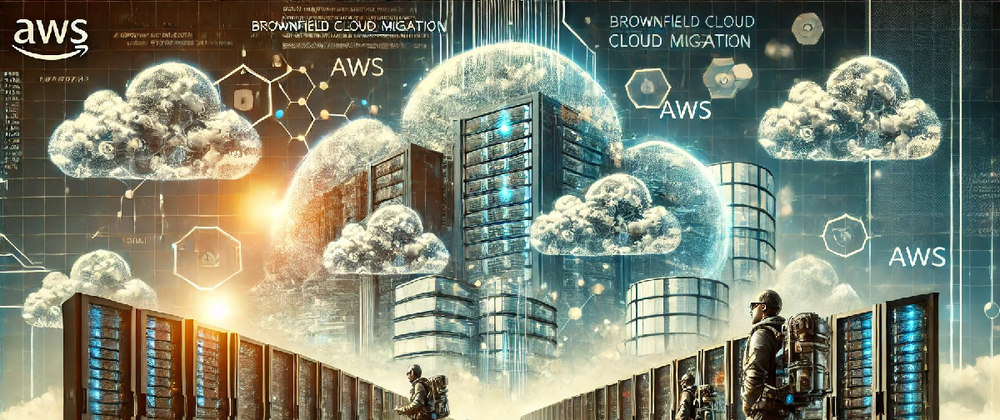In an ideal world, we would have the luxury of building greenfield cloud environments, however, this is not always the situation we as cloud architects have to deal with.
Greenfield environments allow us to design our cloud environment following industry (or cloud vendor) best practices, setting up guardrails, selecting an architecture to meet the business requirements (think about event-driven architecture, scale, managed services, etc.), backing cost into architecture decisions, etc.
In many cases, we inherit an existing cloud environment due to mergers and acquisitions or we just stepped into the position of a cloud architect in a new company, that already serves customers, and there are almost zero chances that the business will grant us the opportunity to fix mistakes already been taken.
In this blog post, I will try to provide some steps for handling brownfield cloud environments, based on the AWS platform.
Step 1 – Create an AWS Organization
If you have already inherited multiple AWS accounts, the first thing you need to do is create a new AWS account (without any resources) to serve as the management account and create an AWS organization, as explained in the AWS documentation.
Once the new AWS organization is created, make sure you select an email address (from your organization's SMTP domain), select a strong password for the Root AWS user account, revoke and remove all AWS access keys (if there are any), and configure an MFA for the Root AWS user account.
Update the primary and alternate contact details for the AWS organization (recommend using an SMTP mailing list instead of a single-user email address).
The next step is to design an OU structure for the AWS organization. There are various ways to structure the organization, and perhaps the most common one is by lines of business, and underneath, a similar structure by SDLC stage – i.e., Dev, Test, and Prod, as discussed in the AWS documentation.
Step 2 – Handle Identity and Access management
Now that we have an AWS organization, we need to take care of identity and access management across the entire organization.
To make sure all identities authenticate against the same identity provider (such as the on-prem Microsoft Active Directory), enable AWS IAM Identity Center, as explained in the AWS documentation.
Once you have set up the AWS IAM Identity Center, it is time to avoid using the Root AWS user account and create a dedicated IAM user for all administrative tasks, as explained in the AWS documentation.
Step 3 – Moving AWS member accounts to the AWS Organization
Assuming we have inherited multiple AWS accounts, it is now the time to move the member AWS accounts into the previously created OU structure, as explained in the AWS documentation.
Once all the member accounts have been migrated, it is time to remove the Root AWS user account, as explained in the AWS documentation.
Step 4 – Manage cost
The next thing we need to consider is cost. If a workload was migrated from the on-prem using a legacy data center mindset, or if a temporary or development environment became a production environment over time, designed by an inexperienced architect or engineer, there is a good chance that cost was not a top priority from day 1.
Even before digging into cost reduction or right-sizing, we need to have visibility into cost aspects, at least to be able to stop wasting money regularly.
Define the AWS management account as the payer account for the entire AWS organization, as explained in the AWS documentation.
Create a central S3 bucket to store the cost and usage report for the entire AWS organization, as explained in the AWS documentation.
Create a budget for each AWS account, create alerts once a certain threshold of the monthly budget has been reached (for example at 75%, 85%, and 95%), and send alerts once a pre-defined threshold has been reached.
Create a monthly report for each of the AWS accounts in the organization and review the reports regularly.
Enforce tagging policy across the AWS organization (such as tags by line of business, by application, by SDLC stage, etc.), to be able to track resources and review their cost regularly, as explained in the AWS documentation.
Step 5 – Creating a central audit and logging
To have central observability across our AWS organization, it is recommended to create a dedicated AWS member account for logging.
Create a central S3 bucket to store CloudTrail logs from all AWS accounts in the organization, as explained in the AWS documentation.
Make sure access to the CloudTrail bucket is restricted to members of the SOC team only.
Create a central S3 bucket to store CloudWatch logs from all AWS accounts in the organization, and export CloudWatch logs to the central S3 bucket, as explained in the AWS documentation.
Step 6 – Manage security posture
Now that we become aware of the cost, we need to look at our entire AWS organization security posture, and a common assumption is that we have public resources, or resources that are accessible by external identities (such as third-party vendors, partners, customers, etc.)
To be able to detect access to our resources by external identities, we should run the IAM Access Analyzer, generate access reports, and regularly review the report (or send their output to a central SIEM system), as explained in the AWS documentation.
We should also use the IAM Access Analyzer to detect excessive privileges, as explained in the AWS documentation.
Begin assigning Service control policies (SCPs) to OUs in the AWS organizations, with guardrails such as denying the ability to create resources in certain regions (due to regulations) or preventing Internet access.
Use tools such as Prowler, to generate security posture reports for every AWS account in the organization, as mentioned in the AWS documentation – focus on misconfigurations such as resources with public access.
Step 7 – Observability into cloud resources
The next step is visibility into our resources.
To have a central view of logs, metrics, and traces across AWS organizations, we can leverage the CloudWatch cross-account capability, as explained in the AWS documentation. This capability will allow us to create dashboards and perform queries to better understand how our applications are performing, but we need to recall that the more logs we store, has cost implications, so for the first stage, I recommend selecting production applications (or at least the applications that produces the most value to our organization).
To have central visibility over vulnerabilities across the AWS organizations (such as vulnerabilities in EC2 instances, container images in ECR, or Lambda functions), we can use Amazon Inspector, to regularly scan and generate findings from all members in our AWS organizations, as explained in the AWS documentation. With the information from Amazon Inspector, we can later use the AWS SSM to deploy missing security patches, as explained in the AWS documentation.
Summary
In this blog post, I have reviewed some of the most common recommendations I believe should grant you better control and visibility into existing brownfield AWS environments.
I am sure there are many more recommendations and best practices, and perhaps next steps such as resource rightsizing, re-architecting existing workloads, adding third-party solutions for observability and security posture, and more.
I encourage readers of this blog post, to gain control over existing AWS environments, question past decisions (for topics such as cost, efficiency, sustainability, etc.), and always look for the next level in taking full benefit of the AWS environment.
About the author
Eyal Estrin is a cloud and information security architect, an AWS Community Builder, and the author of the books Cloud Security Handbook and Security for Cloud Native Applications, with more than 20 years in the IT industry.
You can connect with him on social media (https://linktr.ee/eyalestrin).
Opinions are his own and not the views of his employer.



Top comments (9)
Great guide on navigating brownfield AWS environments—it’s clear and actionable. If you're presenting your cloud architecture learnings, check out versatile slide presentation tools.
Don’t waste time looking for Jujutsu Infinite codes across the internet. jujutsuinfinitecodes.net has them all, updated daily. Boost your stats and stand out in battle.
Excellent guide for AWS brownfield challenges! Claude ArtifactsHub could help document legacy-to-cloud transitions with versioned architecture diagrams. Really practical steps for complex migrations - bookmarked this gem!
This blog post is a fantastic resource for anyone managing brownfield AWS environments. It provides a clear, structured approach to bringing order, security, and cost-efficiency to inherited cloud infrastructure. The emphasis on governance, observability, and continuous improvement makes it especially valuable for cloud architects stepping into complex, pre-existing setups.
This hits home — inherited systems can feel like deciphering someone else's logic in the dark. The cleanup and visibility steps are gold.
Reminds me of how legacy communication (like Morse code) still pops up in modern tech workflows. If anyone's ever had to decode a signal from scratch, this tool makes it way less painful.
Appreciate the step-by-step breakdown — bookmarking this for my next AWS audit.
If access control is still a pain for your team, this episode is a must-listen. 🎧 Omri Gazitt (CEO of Aserto) breaks down what modern, cloud-native authorization should look like and how to get it right—without drowning in tech debt. Whether you're leading a startup or scaling enterprise systems, the insights in this episode are 🔥.
While you’re rethinking access control, tools like Delta Maath can help you make data-backed decisions securely, and Presentia AI lets you turn takeaways from the episode into clean, shareable decks for your team.
Awesome breakdown! Cleaning up a brownfield AWS setup feels like walking into a messy kitchen mid-service — tools everywhere, recipes half-finished. I actually shared a fun analogy (with some food for thought) here: quick bite. Might be a tasty read for cloud folks.
Great article! This step-by-step guide makes it much easier to understand how to handle brownfield AWS environments. I especially like the focus on cost management, security posture, and centralized logging. For anyone looking for more AWS tips, check out this AWS resources page.
Great insights on managing brownfield AWS environments—practical and actionable! For more cloud architecture tips and tools, visit AmberMenu